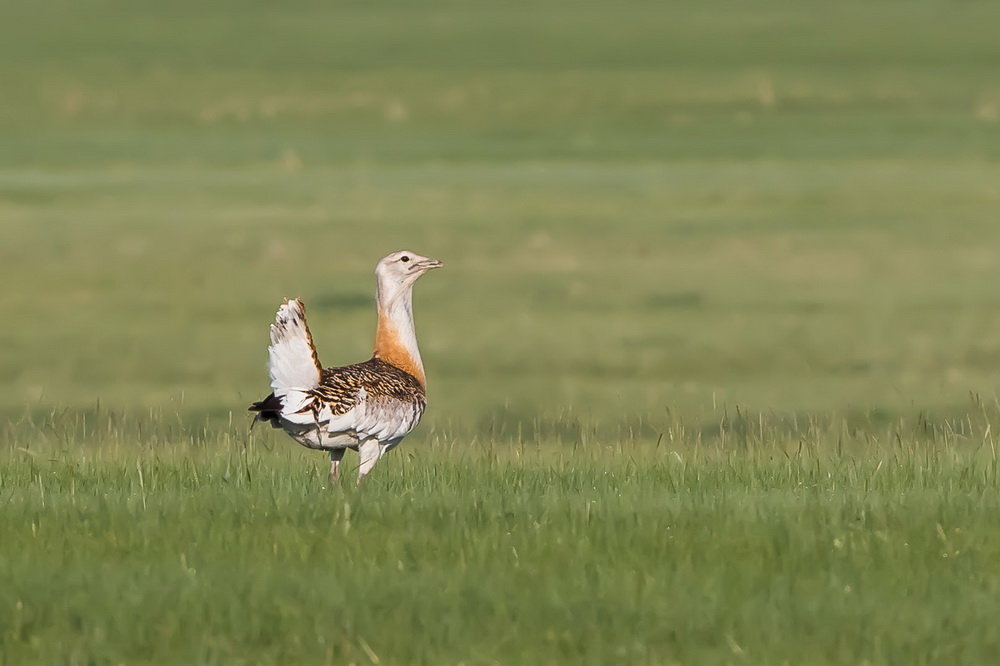Global Experts Fly In To Save Asia’s Biggest Bird
The Asian population has declined in recent years and it is now thought that there are fewer than 2,500 individual birds left. The reasons for the decline include illegal hunting, changes in agriculture and the dangers posed by electric power lines. Experts from Central and East Asia and Europe convene for a meeting in Mongolia to develop action plans to save the species.
Great Bustard experts from across the globe met in Ulaanbaatar from 24 to 30 May to plan the conservation of the Great Bustard in Asia. The Great Bustard is the heaviest bird capable of flight and in Asia are even rarer than snow leopards. The conference hosted experts from nine countries, including China, Kazakhstan, Kyrgyzstan, Mongolia, the Russian Federation, Tajikistan, Uzbekistan, the United Kingdom and the USA, and included contributions from Iran and Turkmenistan.

Western European Great Bustard populations are now either stable or increasing but in the east there is conservation concern as the numbers are declining. The conference concentrated on identifying the threats to the birds at different times of the year in breeding, stopover, and wintering sites, and on international cooperation to remove or reduce these threats. Major threats to the species in Asia are illegal hunting and poisoning for meat, and loss of habitat in certain areas.

The conference was supported by the Mongolian Government and organized by the Wildlife Science and Conservation Center of Mongolia and the Eurasian Bustard Alliance. The meeting was possible thanks for funding provided by the Trust for Mutual Understanding, an American organization that promotes cooperation among Central Asian States.
Dr. Borja Heredia, Head of the Avian Species Unit at the CMS Secretariat said “This meeting is a milestone in terms of initiating a process of cooperation for the conservation of a severely threatened species. The Great Bustards cross international boundaries during their migration and coordination of conservation measures between countries is needed to be effective”.
Originally this article was published on CMS website on 1 June 2017, click here

